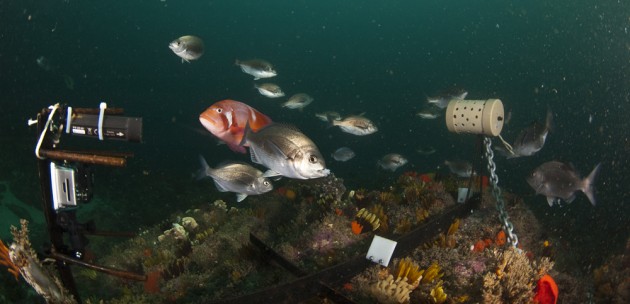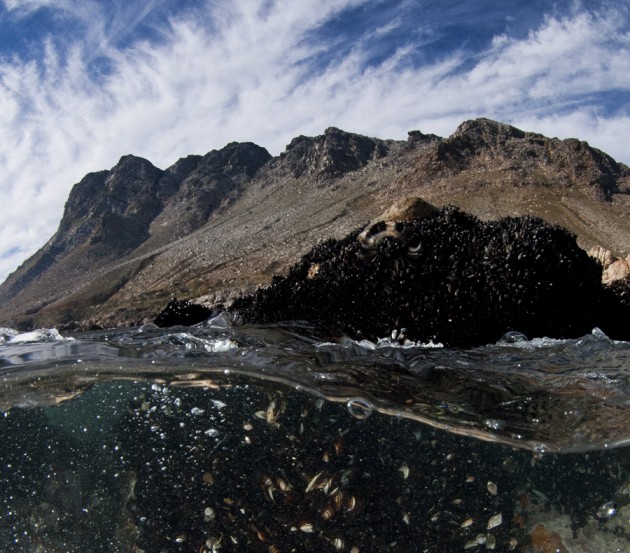The beauty of BRUVs …
Having given you a glimpse into what we’ve been up to, on land and on the boat, I figured the next step would be to showcase what the underwater world looks like when we survey it.
In our bid to get those final 50 hours’ filming completed before the Cape winds and rain whirled across False Bay again and scuppered our chances of getting out to sea, we spent the past week going to sea every single day. This translates into 5am wake-ups (researchers know that the importance of preparing sufficient fieldwork snacks to keep your crew happy should never be underestimated … No one likes a sulky skipper!) and boat launches as soon as light and tides allow. A typical day in the field will finish around 4pm, after which we need to tow the boat back and wash all our equipment (another 2 hours). My evenings are spent charging cameras and downloading data, before preparing the coordinates and navigation equipment for the next day. If I’m lucky and work very fast, I’ll be in bed by 11:30 pm (that’s a good day) … before my alarm clock shrieks rudely into my ear again to do it all over again the next day!
Some rainy days and exceptional cold (South Africa had been experiencing snowy conditions!) aside, our last two days on the water turned out to be gloriously sunny … and the ocean treated us to her finest glassy, flat conditions.

Slightly warmer waters see more active fish, and increases their presence in front of our cameras. Photo courtesy Steve Benjamin
Our BRUVs each have a temperature logger attached to them, which records temperature for the duration of our study, at five minute intervals. This means that I can later analyse differences in fish diversity and abundance based on habitat (whether it’s on reef or sand, what type of reef), depth and temperature. Increases or decreases in ocean temperature affect fish activity, so (broadly speaking) in cold conditions, we typically anticipate fewer fish in front of our cameras and expect fish to be more active (and therefore, more abundant in front of our cameras) at sites where water temperature is higher.
Surveying a range of depths is also important to assess the differences in fish diversity and abundance across different sites. Working in the shallower regions has some perks (the gorgeous mountain views make a day on the ocean pure bliss!) There is much literature out there (if you’re interested) that looks at the different fish and plant communities according to ocean depth. For my own MSc work, I had looked at which species typify the different depth strata in the Stilbaai Marine Protected Area … and I anticipate doing the same for this survey. It is certainly exciting to see where species have their nurseries, or where species utilise the higher light conditions in shallower water (which promotes algal growth and certain food source abundance) or occupy niches in deeper regions where light becomes limiting.

Ralph lowers a BRUV into the sea while I untangle the chaotic mess of rope behind! Photo courtesy Steve Benjamin
Seeing first-hand the diversity of False Bay in terms of habitat (and consequently, the fish life it hosts) has been a phenomenal experience during this first winter survey. There really is something to be said for “keeping it close to home” – my eyes have been opened, and I feel that False Bay and I are fast becoming more familiar friends! Repeating our major survey in December will also allow us to analyse differences in fish diversity and abundance across seasons, and may inform us about the use of these BRUV cameras in picking up seasonal and migrant species, as well as in possibly detecting differences in the seasonal use of regions of the Bay by various species.


Leave a Reply
You must be logged in to post a comment.